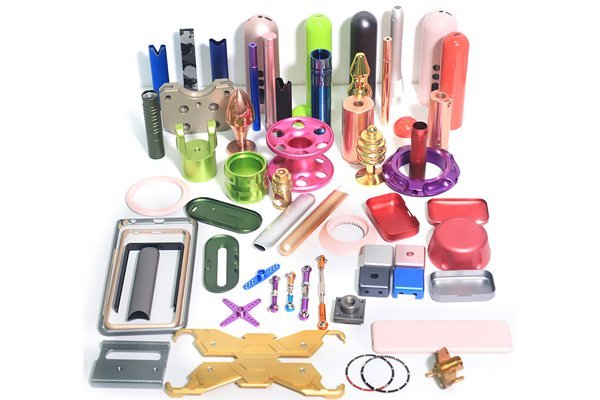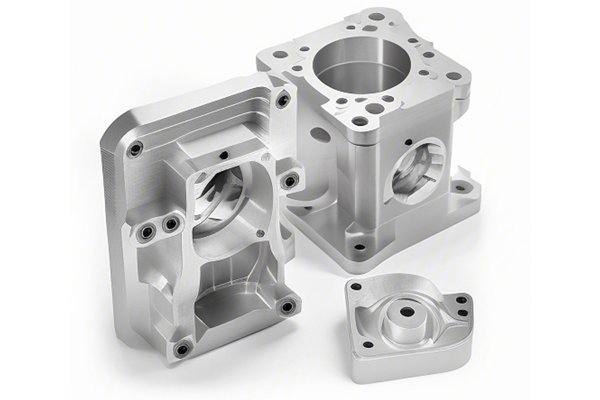Did you know that the global CNC machining market is projected to reach $100 billion by 2025? This astonishing growth signifies the pivotal role CNC (Computer Numerical Control) machining plays in modern manufacturing, particularly in producing custom components like gears and shafts. As industries march towards greater efficiency and precision, understanding the benefits of CNC machining for custom gears and shafts becomes essential for manufacturers and engineers alike.
In this comprehensive blog, we will delve deep into the world of CNC machining and explore its advantages, applications, processes, and best practices in creating custom gears and shafts. By the end, you will have a nuanced understanding of why CNC machining stands as a cornerstone in the manufacturing industry and how it can optimize your production.
CNC machining is a subtractive manufacturing process that utilizes computer-controlled machines to create specific shapes and designs. This involves the removal of material from a solid block to form the desired part. Given its versatility, CNC machining has found applications in various industries, including automotive, aerospace, medical, and more.
1.1 Key Components of CNC Machining
Gears and shafts are essential components in machinery, serving as various functions such as motion transfer, torque generation, and system efficiency.
2.1 Applications of Gears and Shafts
Now that we have a foundational understanding of CNC machining and its relevance, let’s dive into the specific advantages it brings to the manufacturing of custom gears and shafts.
3.1 Precision and Accuracy
One of the most significant benefits of CNC machining is its ability to produce highly precise and intricate parts. This accuracy is crucial, especially for gears and shafts that must fit together perfectly to function effectively.
3.2 Flexibility and Customization
CNC machining offers unparalleled flexibility, allowing for the creation of custom designs tailored to specific needs.
3.3 Reduced Lead Times
With traditional machining methods, producing custom components can take weeks, if not months. CNC machining significantly reduces these lead times.
3.4 Cost-Effectiveness
At first glance, CNC machining may seem like a more expensive alternative, but when considering overall costs, it often proves to be more cost-effective.
Understanding the CNC machining process is crucial for optimizing the production of custom gears and shafts. Here’s a step-by-step breakdown of this process:
4.1 Design Phase
4.2 Programming Phase
4.3 Setup Phase

4.4 Machining Phase
4.5 Finishing Phase
To maximize the benefits of CNC machining, implement the following best practices:
5.1 Invest in Quality Machines
Investing in high-quality CNC machines with updated technology can significantly improve precision and efficiency.
5.2 Optimize Designs for Manufacturability
Collaborate with engineers to ensure designs are optimized for the CNC machining process to avoid potential issues later.
5.3 Conduct Regular Maintenance
Maintaining CNC machines is vital to ensure consistent performance and longevity.
5.4 Utilize Skilled Operators
Having skilled operators helps to execute complex tasks more efficiently and with fewer errors.
5.5 Continuous Improvement
Incorporate data analytics to assess production performance and identify areas for improvement.
To illustrate how CNC machining for custom gears and shafts is revolutionizing various industries, consider the following case studies:
6.1 Automotive Industry
A leading automotive manufacturer improved its transmission efficiency by utilizing CNC-machined gears, resulting in a 15% increase in overall vehicle performance.
6.2 Aerospace Sector
An aerospace company was able to reduce the weight of its aircraft components by 20% by producing lightweight, high-strength shafts via CNC machining.
6.3 Robotics
Custom gears designed and machined using CNC technology improved the precision and efficiency of robotic arms used in assembly lines.
As technology progresses, several trends are reshaping CNC machining for custom gears and shafts:
7.1 Integration of IoT
IoT-enabled CNC machines can collect data and monitor performance in real-time, enhancing monitoring and maintenance.
7.2 Advanced Materials
New materials, including composites and advanced alloys, are opening new avenues for CNC machining applications.
7.3 Automation and AI
Artificial intelligence is streamlining the design and machining process, optimizing production chains, and minimizing downtime.
CNC machining is undeniably a game-changer in the creation of custom gears and shafts. Its precision, flexibility, cost-effectiveness, and reduced lead times make it the go-to manufacturing solution for many industries.
As we’ve explored in this blog, understanding the CNC machining process, its advantages, and best practices is essential for manufacturers who wish to harness its full potential. Whether you’re in the automotive, aerospace, or any other industry, leveraging CNC machining can help elevate your production capabilities and optimize performance.
Ultimately, this blog serves as a reminder of the importance of embracing advanced manufacturing technologies. As the industry continues to evolve, staying informed and adopting new techniques can be the key difference between success and stagnation. Consider how CNC machining can transform your operations and remain competitive in a rapidly advancing marketplace.
Related Posts
- How Does 5-Axis CNC Machining Enhance Precision for Custom Engineering Components?
- What is the difference in machining accuracy between 7075 aluminum and 6082 aluminum during CNC turning?
- Here’s a question-style FAQ title based on the provided keywords: What Are the Advantages and Disadvantages of 3D Printing Compared to CNC Machining Plastics?






